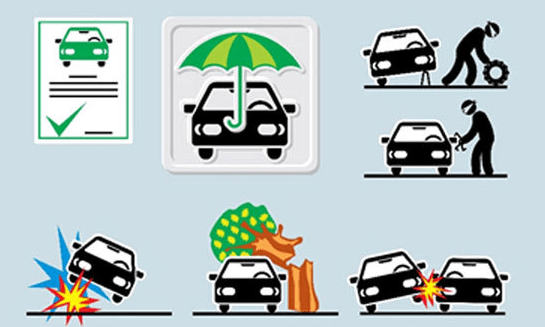Buying a car often means taking out a loan, but managing that loan efficiently can lead to significant savings over time. Whether you’re purchasing a new vehicle or a used one, understanding how to minimize the cost of your car loan can save you hundreds or even thousands of dollars. Here’s a comprehensive guide to help you save money on your car loan.
1. Improve Your Credit Score
Your credit score is one of the most critical factors in determining your car loan’s interest rate. Lenders use your credit score to gauge the risk of lending you money. A higher credit score typically translates to a lower interest rate, which can lead to substantial savings over the life of the loan.
Steps to Improve Your Credit Score:
- Check Your Credit Report: Regularly review your credit reports for errors or discrepancies. Correcting mistakes can boost your score.
- Pay Down Existing Debt: Reducing credit card balances and other debts can improve your credit utilization ratio, positively affecting your score.
- Pay Bills on Time: Consistent, timely payments on all your bills (credit cards, loans, utilities) contribute positively to your credit history.
- Avoid New Credit Accounts: Applying for new credit can temporarily lower your score. Avoid unnecessary credit inquiries before applying for a car loan.

2. Shop Around for the Best Rates
Interest rates on car loans can vary widely depending on the lender. Therefore, it’s crucial to shop around to find the best rate available.
How to Compare Rates:
- Visit Multiple Lenders: Check rates from various sources, including banks, credit unions, and online lenders. Each may offer different rates and terms.
- Use Online Tools: Many websites offer loan comparison tools that can help you find competitive rates quickly.
- Negotiate with Lenders: Don’t hesitate to negotiate the loan terms. Some lenders may be willing to lower the rate if you have a good credit history or are a loyal customer.
3. Consider the Loan Term Carefully
The length of your loan term significantly affects your monthly payments and the total amount of interest you’ll pay.
Loan Term Considerations:
- Shorter Terms: Loans with shorter terms usually have higher monthly payments but lower interest rates and total interest costs.
- Longer Terms: Loans with longer terms may have lower monthly payments but higher overall costs due to extended interest payments.
- Find a Balance: Choose a loan term that fits your budget while minimizing the total interest paid. Aim for the shortest term you can afford without straining your finances.
4. Make a Larger Down Payment
A larger down payment reduces the amount you need to borrow, which can lead to lower monthly payments and less interest paid over the life of the loan.
Benefits of a Larger Down Payment:
- Lower Principal: Reduces the total loan amount and, consequently, the amount of interest paid.
- Better Loan Terms: A larger down payment can sometimes help you secure better loan terms, including lower interest rates.
- Increased Equity: Reduces the risk of owing more than the car is worth (negative equity).
5. Consider a Refinance
If you’ve already taken out a car loan, refinancing might help you secure a better interest rate or more favorable terms.
When to Refinance:
- Improved Credit Score: If your credit score has improved since you initially took out the loan, you might qualify for a lower rate.
- Lower Interest Rates: If market rates have dropped since you took out your loan, refinancing could save you money.
- Better Loan Terms: Refinancing can also be an opportunity to adjust your loan term to better match your current financial situation.
How to Refinance:
- Check Your Current Loan Terms: Understand your current loan’s interest rate, term, and remaining balance.
- Compare Refinancing Offers: Shop around for refinancing options and compare rates, fees, and terms.
- Calculate Savings: Use online refinancing calculators to estimate your potential savings.
6. Opt for Automatic Payments
Many lenders offer a discount on the interest rate if you set up automatic payments from your bank account.
Benefits of Automatic Payments:
- Interest Rate Discount: Some lenders provide a small reduction in the interest rate for setting up automatic payments.
- Avoid Late Fees: Automatic payments help ensure that you never miss a payment, avoiding late fees and potential damage to your credit score.

7. Choose the Right Type of Loan
Understanding the different types of car loans can help you choose the one that best fits your financial situation.
Types of Car Loans:
- Fixed-Rate Loans: Your interest rate remains the same throughout the loan term, providing predictable monthly payments.
- Variable-Rate Loans: The interest rate can fluctuate based on market conditions, which may lead to lower initial rates but potential increases over time.
- Secured Loans: These loans are backed by the car as collateral, often resulting in lower interest rates compared to unsecured loans.
8. Understand the Total Loan Cost
It’s essential to consider the total cost of the loan, not just the monthly payment. This includes the interest and any additional fees.
Key Considerations:
- Total Interest Paid: Calculate how much you’ll pay in interest over the life of the loan.
- Loan Fees: Be aware of any fees associated with the loan, such as origination fees or prepayment penalties.
- Total Loan Cost: Sum up the principal, interest, and any fees to understand the total cost of the loan.
9. Make Extra Payments
If your budget allows, making extra payments toward the principal can significantly reduce the total interest paid and shorten the loan term.
Ways to Make Extra Payments:
- Biweekly Payments: Instead of making monthly payments, consider making half payments every two weeks. This can lead to one extra payment per year and reduce the principal faster.
- Round Up Payments: Round up your monthly payments to the nearest hundred or thousand to reduce the principal more quickly.
- Lump Sum Payments: Apply any extra cash, such as tax refunds or bonuses, toward your loan principal.
10. Avoid Unnecessary Add-Ons
Dealerships often offer add-ons like extended warranties, gap insurance, and other products. While some of these can be beneficial, they can also increase the overall cost of your loan.
Considerations for Add-Ons:
- Evaluate Necessity: Assess whether the add-ons are essential and if they offer value for the cost.
- Shop Separately: You might find better deals on these products from third-party providers rather than purchasing them through the dealership.
Conclusion
Saving money on a car loan involves a combination of smart financial practices and careful planning. By improving your credit score, shopping around for the best rates, choosing the right loan term, and considering refinancing options, you can reduce the overall cost of your loan. Additionally, making larger down payments, opting for automatic payments, and avoiding unnecessary add-ons can contribute to savings. By following these strategies, you can make a more informed decision and potentially save a significant amount of money over the life of your car loan.










